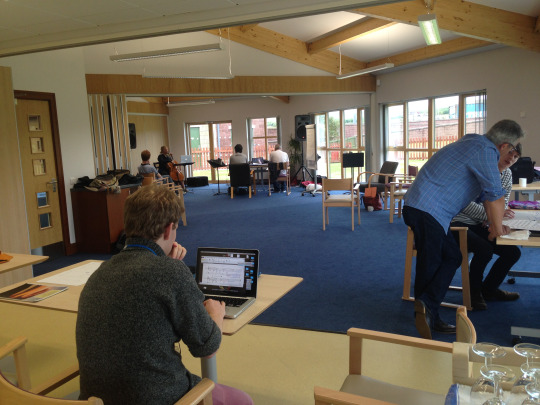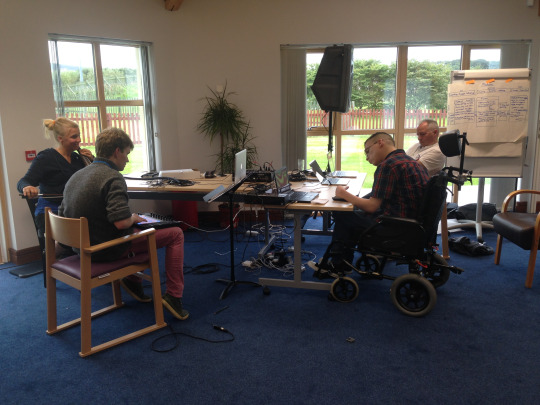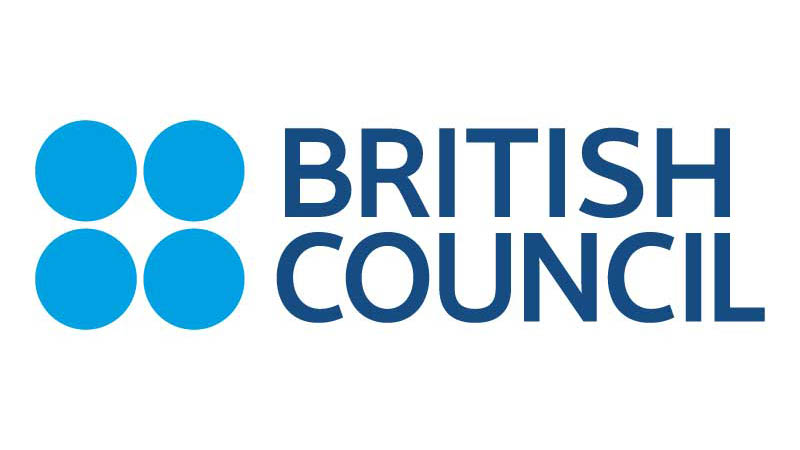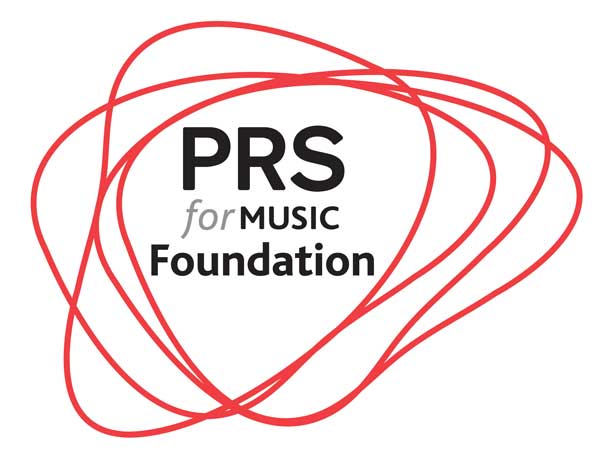

1st day in Orkney
25 September 2015
We arrived last night into a rainbow: our small plane touched down onto a pristine landscape, with an arc of colour just ahead of its nose.
Half of the group had arrived in Orkney earlier that day, and the rest of us – Alasdair Nicolson (St Magnus International Festival), Clea Friend (musician), Jonathan ‘Jay’ Hagon (musician), and Julie and Jenny Hagon (Jay’s carers)– drove through bright green fields to the Orkney Hotel in Kirkwall, where we met the others: Frank Lyons (Ulster University and Walled City Music), James Pike (musician) and three composers from the Royal Conservatoire of Scotland: Nicholas Olson, Aidan Teplitzky and Aran Browning.
We met at sunset in the Pickaquoy Centre for introductions and a glass of wine. We talked about our backgrounds and what had brought each of us here, to an intensive weekend of collaboration and exploration of new musical technologies and notational forms.
The next morning, work began. Jay, James and Frank had travelled from Derry with an array of new instruments – both ‘off the shelf’ products like Mac Books, and bespoke instruments created specifically for Jay as a performer – and they kicked off with a demonstration. Everyone else eagerly explored, discovering what the new instruments could do and how they relate to ‘conventional’ instruments, like Clea’s cello.
The group decided that, despite appearances, there are a lot of similarities between ‘conventional’ and ‘unconventional’ instruments - not least the fact that both require a lot of practice. New technologies like the Thumb Jam might provide an ‘instant hit’ of sound, as Frank put it. But musicians need to put in hours of practice to release its full potential.
The similarity also stands for notation. After getting to grips with the technology, which breaks down some of the physical barriers to participating in music for disabled musicians, the group began to discuss how to notate for musicians with different levels of experience. This not only means that they might not read music, Frank said, but also that they “don’t think about music in the conventionally trained way.” And yet, as Alasdair pointed out, no form of notation is absolute – it is always open to interpretation. Part of the purpose of working together for this weekend is to find out how to share what we do – to start building a repertoire for inclusive ensembles, and to embed an inclusive way of writing into compositional practice.
The composers had each been asked to prepare a three minute piece for the cello, and the afternoon began with Clea sight-reading the work, before the composers developed ways to integrate Jay’s instruments into each piece. By mid-afternoon, Clea, Jay and the composers were collaborating and improvising together to bring new music to life.

As the project evaluator, I could simply sit back and observe the sounds build from rough and ready to the beginnings of something beautiful. Grouped around computers, sound desks and music stands, the musicians and composers navigated the rhythms, movement and spaces of this new territory. The movement of Clea’s bow across her cello matched the movement of Jay’s hands across his instruments.
“There’s a plane leaving in a few hours …!” said Alasdair, joking. The group had achieved so much, it almost didn’t seem like we needed the rest of the weekend. The enthusiasm amongst participants to start exploring and responding to each other, and their openness to new instruments, meant that we were off to a flying start.


